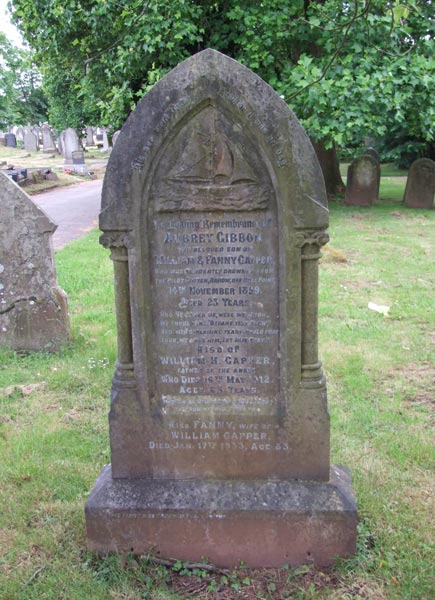St Woolos Cemetery - The Haunted Holy Ground
From the book "The Haunted Holy Ground" by Mike Buckingham and Richard Frame published in 1988.
A Rebirth Borne On The Wind
By Mike Buckingham and Richard Frame
First published 1988
© Mike Buckingham and Richard Frame 2012
Newport and the sea are inseparable. The sea is the lifeblood of the town giving it meaning and even its name.
Yet arguably, the town would have remained a backwater were it not for the work of a small, hardy group of men who sailed the pilot cutters. It was they who brought the merchantmen into port so that imports could be offloaded and our exports of coal, and iron despatched to the four corners of the world.
Pilotage in the Bristol Channel began in the late mediaeval period and by the time Cabot sailed for the Americas in the 16th century was a thriving business. Details of the earliest pilot cutters are scant, although experts believe them not too have been significantly different from the graceful sailing vessels which plied their trade well within living memory.
The pilots were resourceful and tough men who would race their craft with every inch of canvas straining to be first to meet the incoming merchantmen.
You might, you just might be lucky and get a glimpse of a pilot cutter, the Mascotte, perhaps, as it sails into Newport. But a visit to St Woolos cemetery coupled with a slight application of the imagination will make these men and their beautiful craft come alive once more.
Less than 100 yards from the entrance to the cemetery is the grave of Rowles Ray, marked by a towering column bearing a pilot cutter in full sail cut from the stone with a mourning figure atop all. It was a Ray who took Cabot out of the River Avon centuries ago and there has been a Ray working the Bristol Channel ever since, right through the ages of sail and steam and into that of diesels and radar.
A particularly fine carving of a pilot cutter graces the grave of young Aubrey Gibbon, who at the age of 23 drowned in the pilot cutter Arrow of Bull Point, the other side of the Bristol Channel.

Fine carving of a pilot cutter on the headstone of Aubrey Gibbon's grave.
Location:
So fine is the carving that despite the stone having been erected in 1888 one can still make out the letter ‘N’ carved on the sails, denoting that the vessel sailed out of Newport. The stone which marks the grave of John Metcalfe is rather more worn but is a fine example nevertheless. The ship young Metcalfe was piloting went down in 1873 in the Channel with all hands lost.
For this respected young man there followed burial at St Woolos and although nothing could properly console the grieving family a concert was arranged with the proceeds going to themselves and the families of other locals who perished.
There are least half-a-dozen pilot cutters carved into gravestones at St Woolos, and they are a fine tribute to the local stonemason’s craft. Les told us: “Some of the angels and other figures were imported sometimes from as far away as Italy, but the pilot cutters are a purely local ornament.”

Location:
In these days which seem so devoid of romance it is good to know that pilot cutters identical to the ones sailed by these adventurous men still battle with the Channel.
In June, 1987 the Mascotte, a pilot cutter built in Newport in 1906 and now owned by a man from Rye, East Sussex, entered the port for the first time since its last piloting assignment sixty years ago.
The appearance of the Mascotte, her snow-white sails billowing in front of a fresh breeze and bowsprit dipping in the slight swell seized the imagination of Newport Maritime Trust, a body formed three years ago and determined to record Newport’s seafaring history. No vessel more than a pilot cutter could epitomise this story and the trust set out to find one just like her.
For months they scoured the waterways of southern and western England and the coast of South Wales looking for a cutter, prodding rotten planking, inspecting sodden hulls and sadly rejecting one after the other. Just as all seemed lost a beauty going by the name of the Cariad, which means ‘sweetheart’ in Welsh, presented herself.
The Cariad was found snuggling close to a wharf of Exeter Maritime Museum, intact all but for her rigging. The museum’s owners were delighted that the Cariad should return to her native waters and offered her on extended loan to the trust, absolutely free of charge.
At time of writing, the search is on for a berth in Newport for the Cariad, which will then be brought here by road and refurbished over a period of a couple of years.
Is it too much to imagine that the men who lie in St Woolos will smile from somewhere the other side of the grave when one of the proud little ships to which they gave their lives sails back into the port which gave them their livelihood?